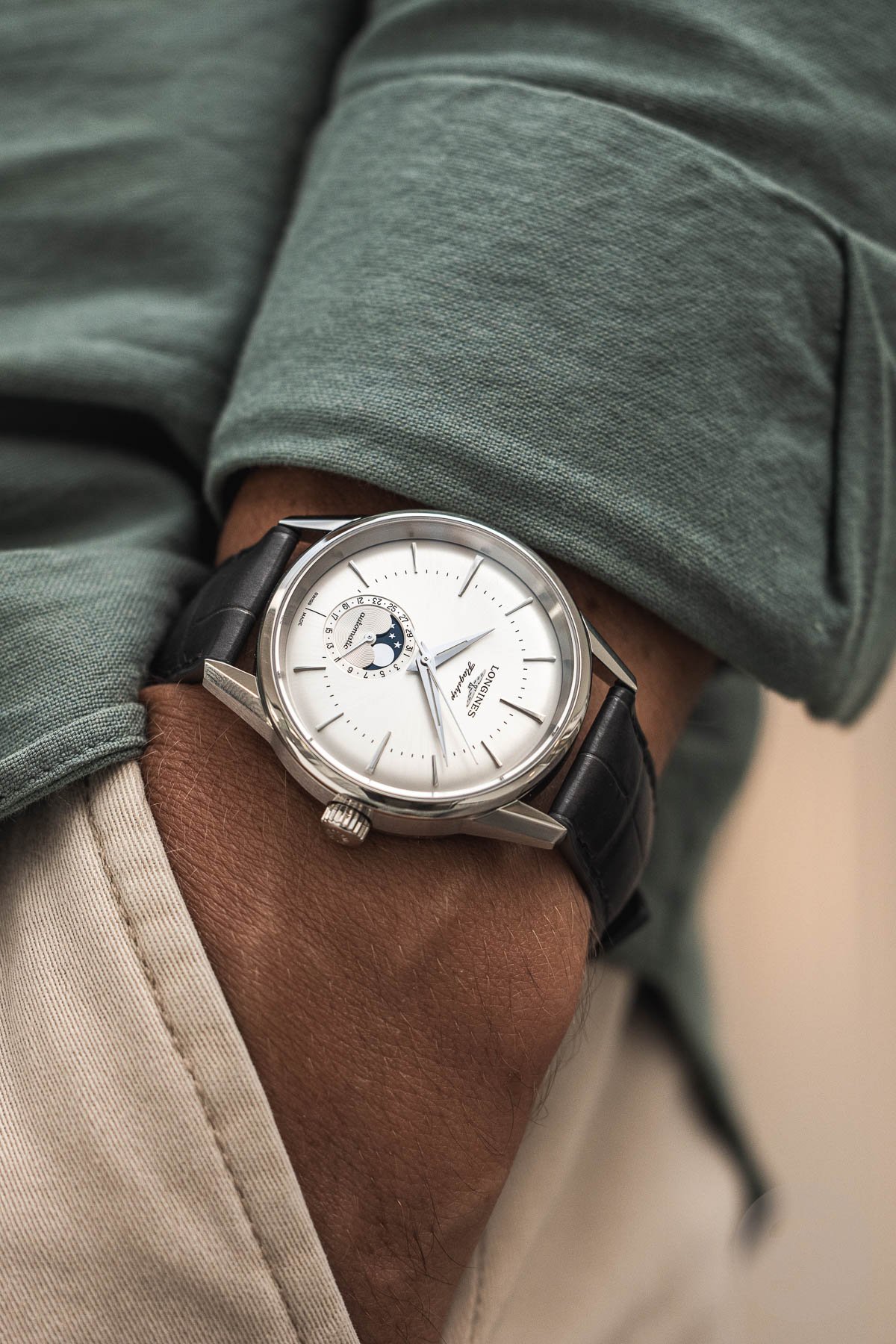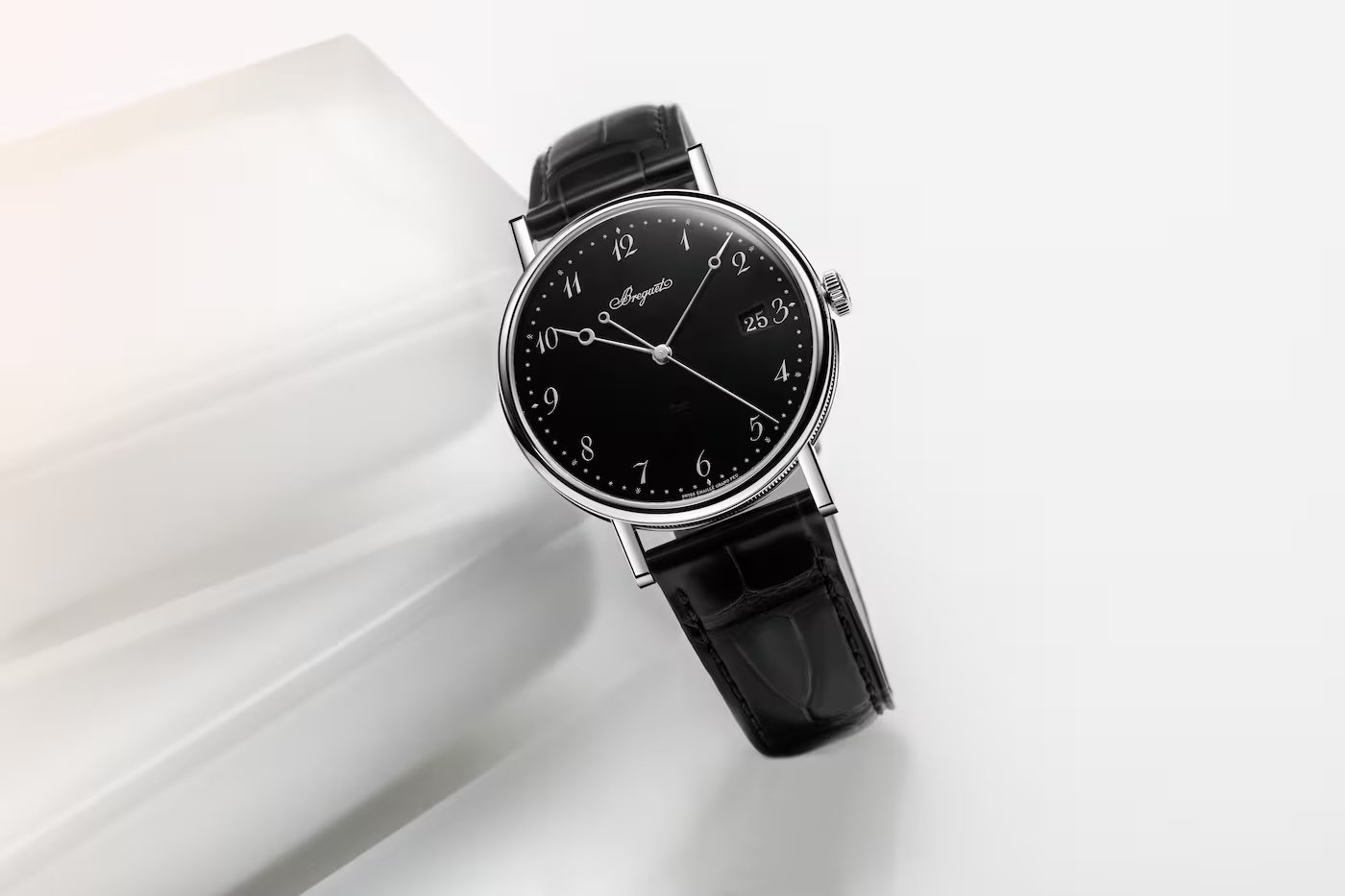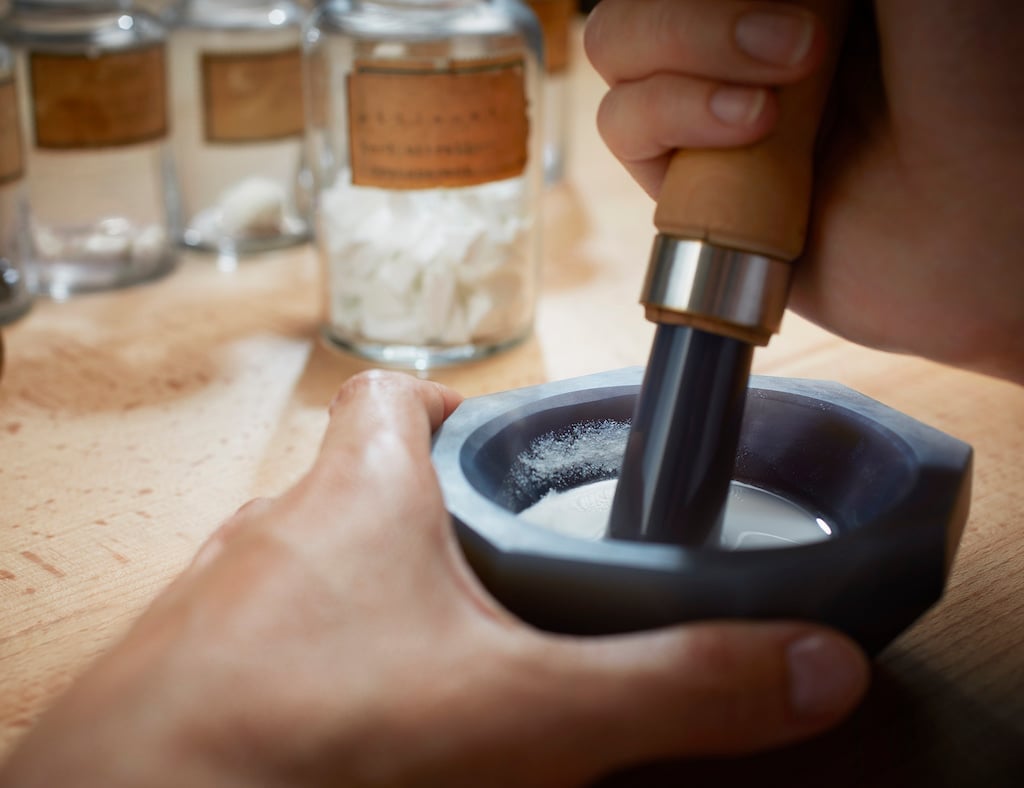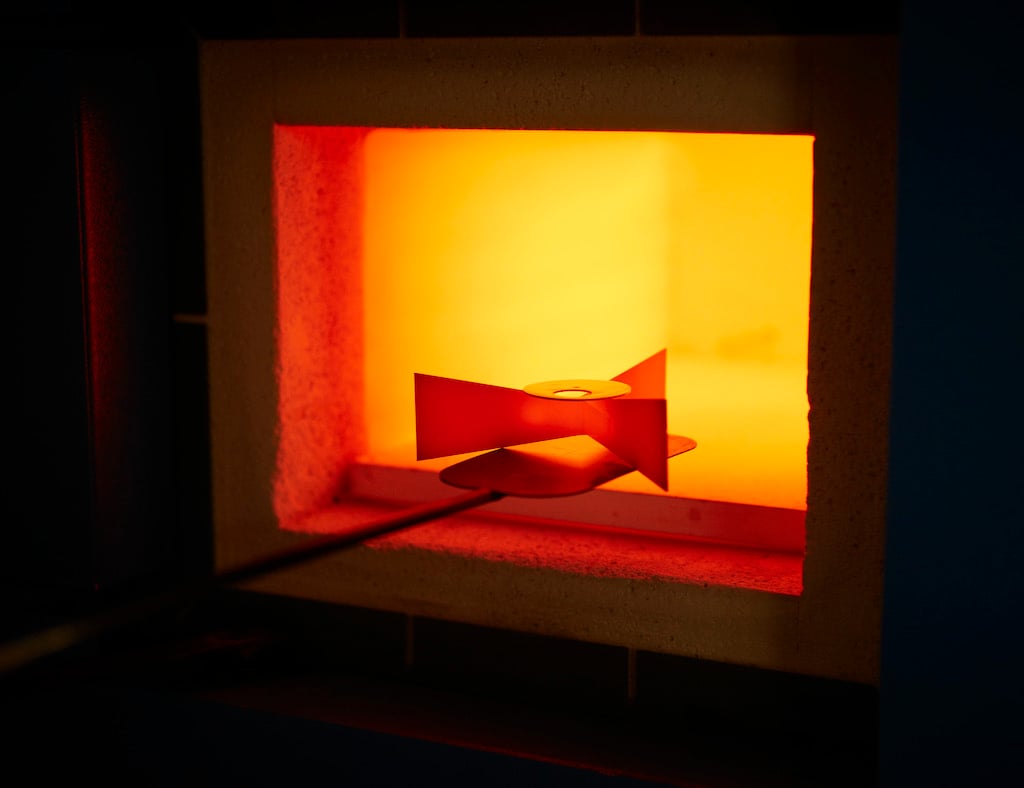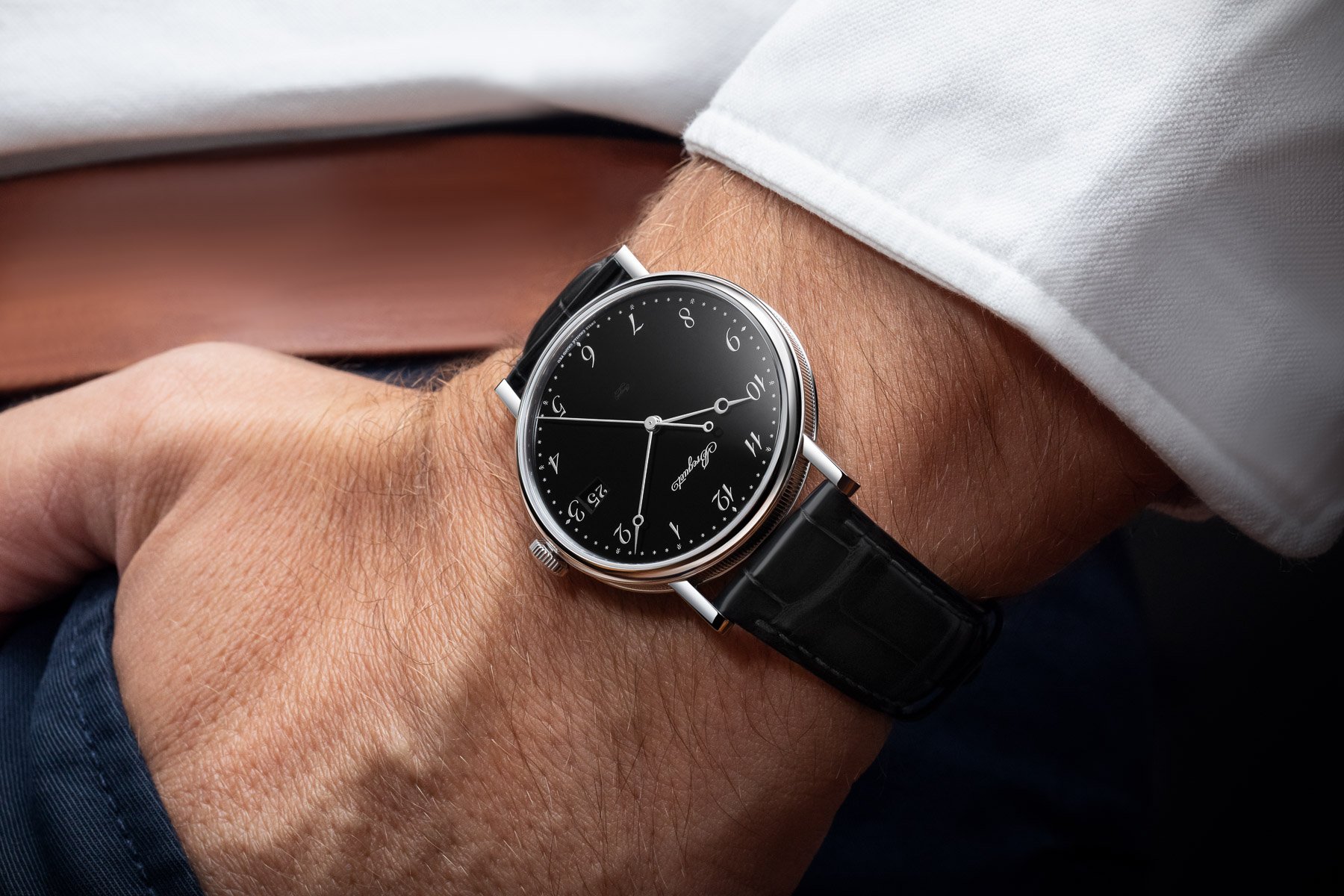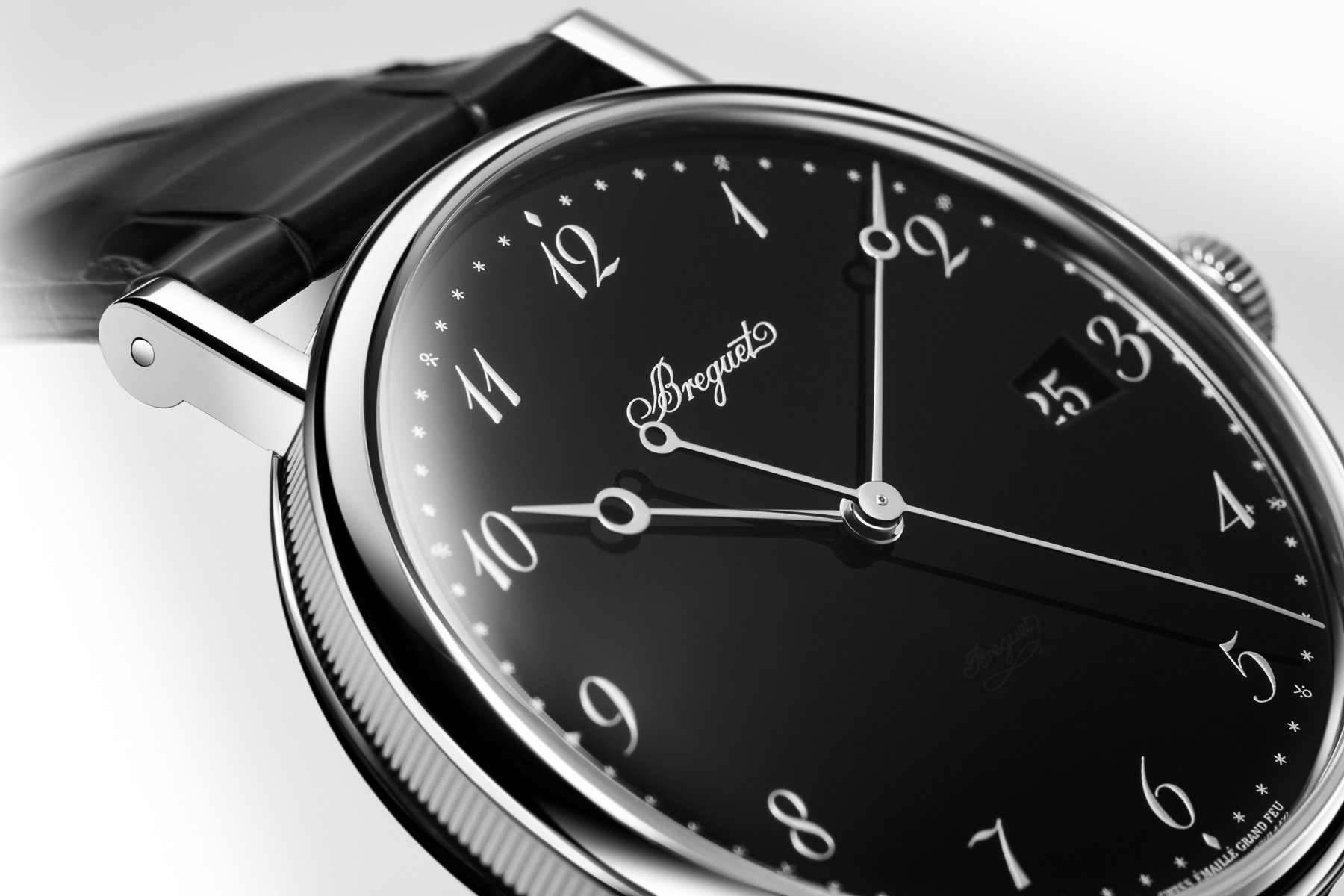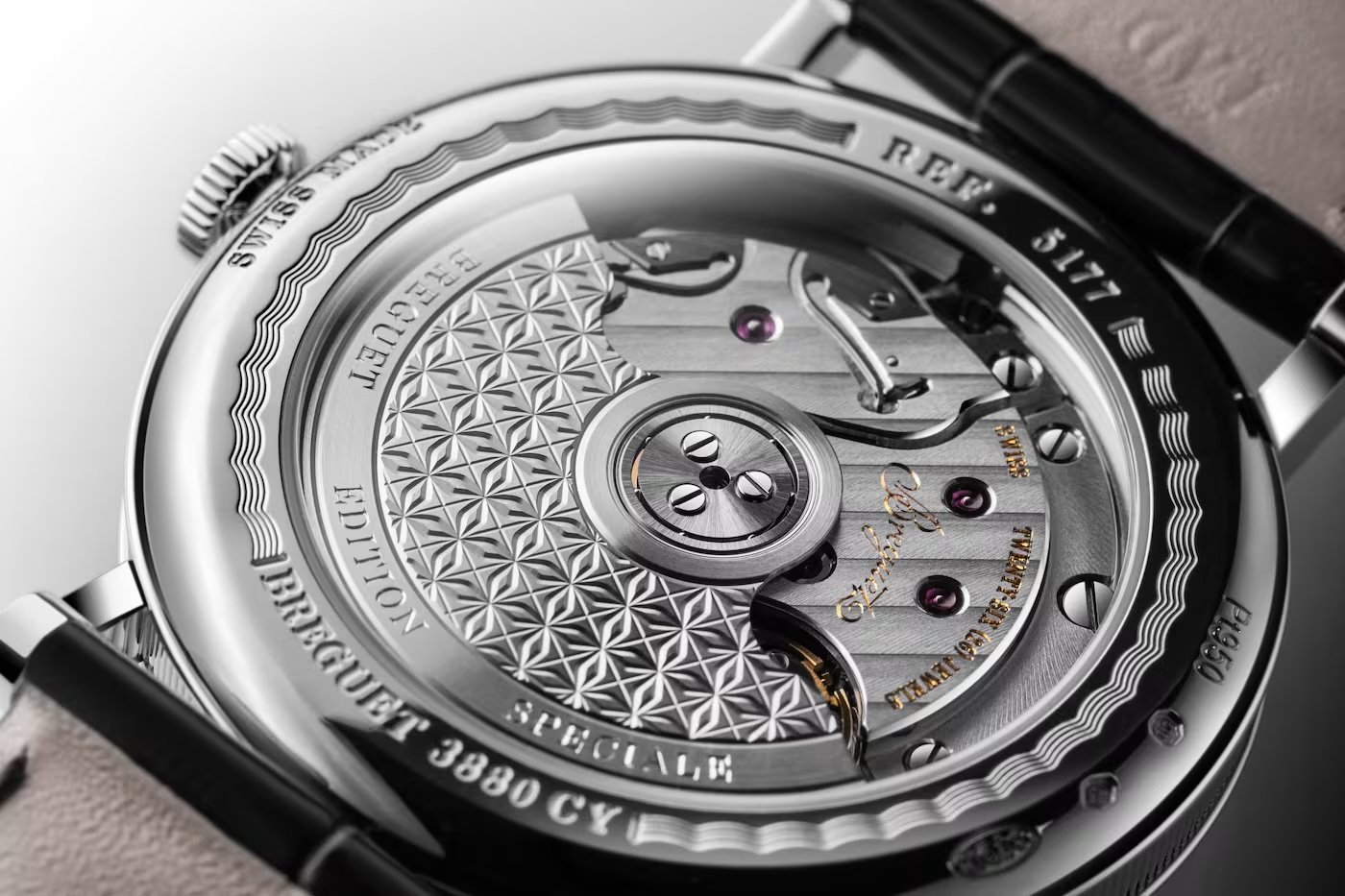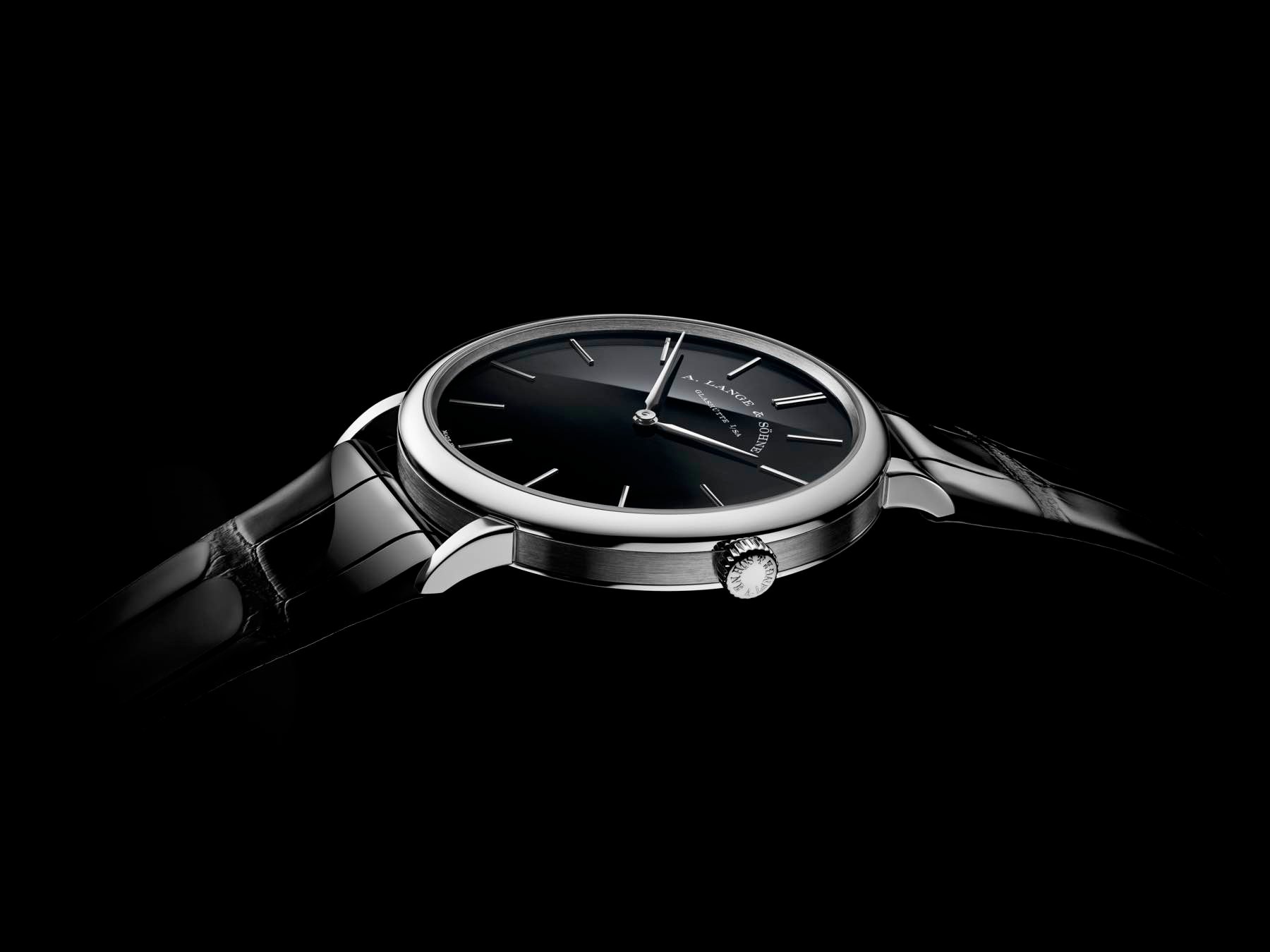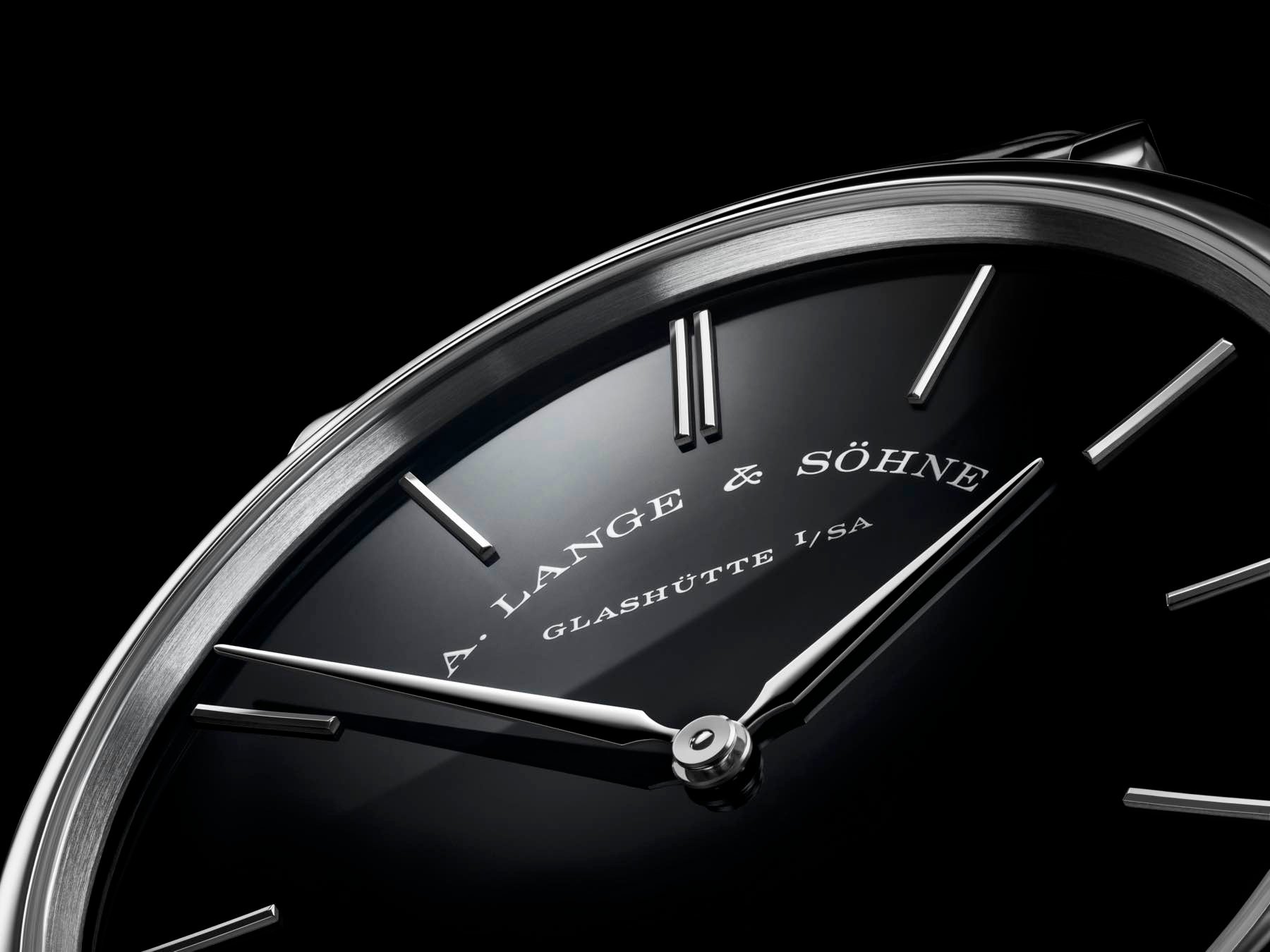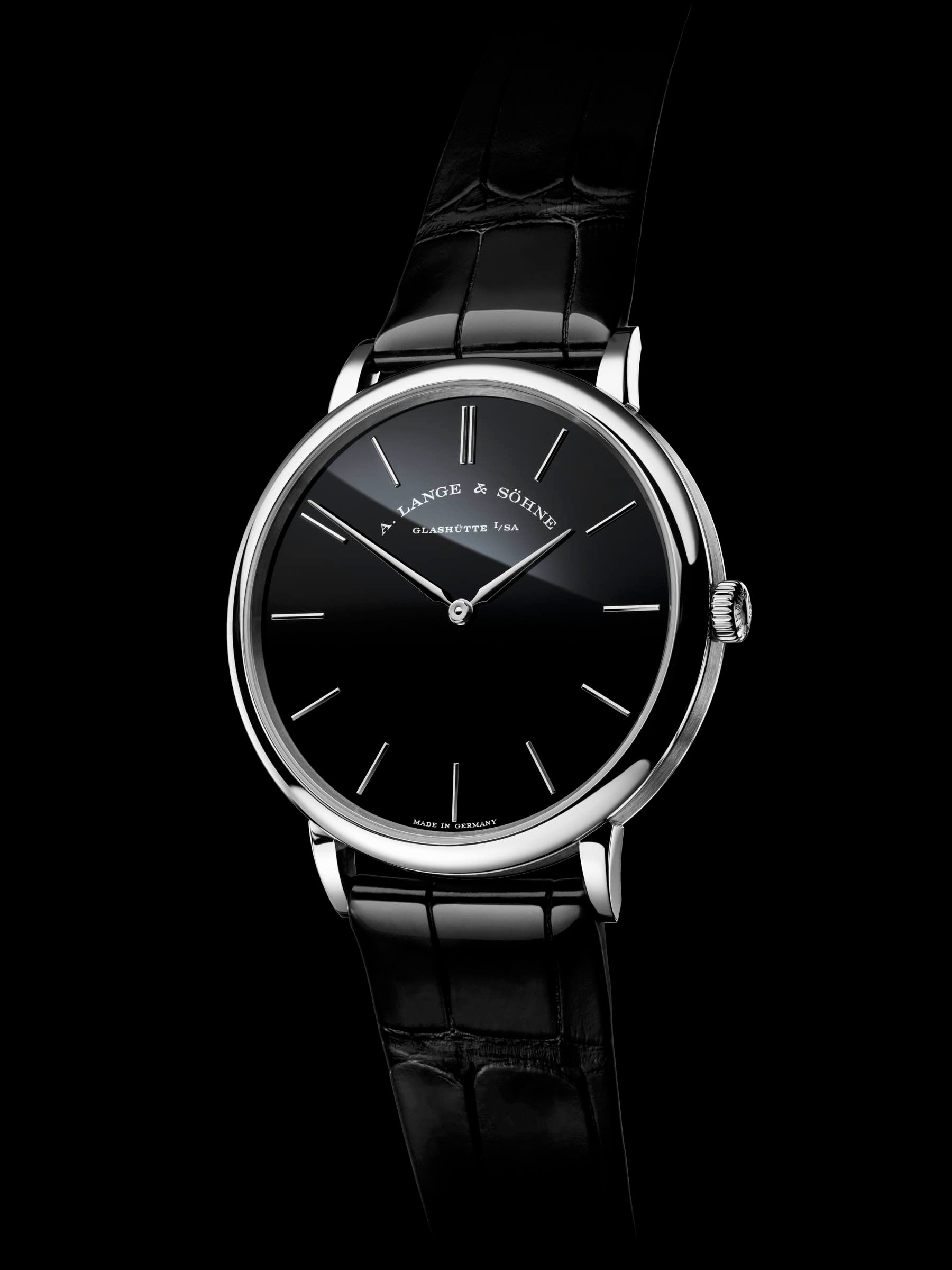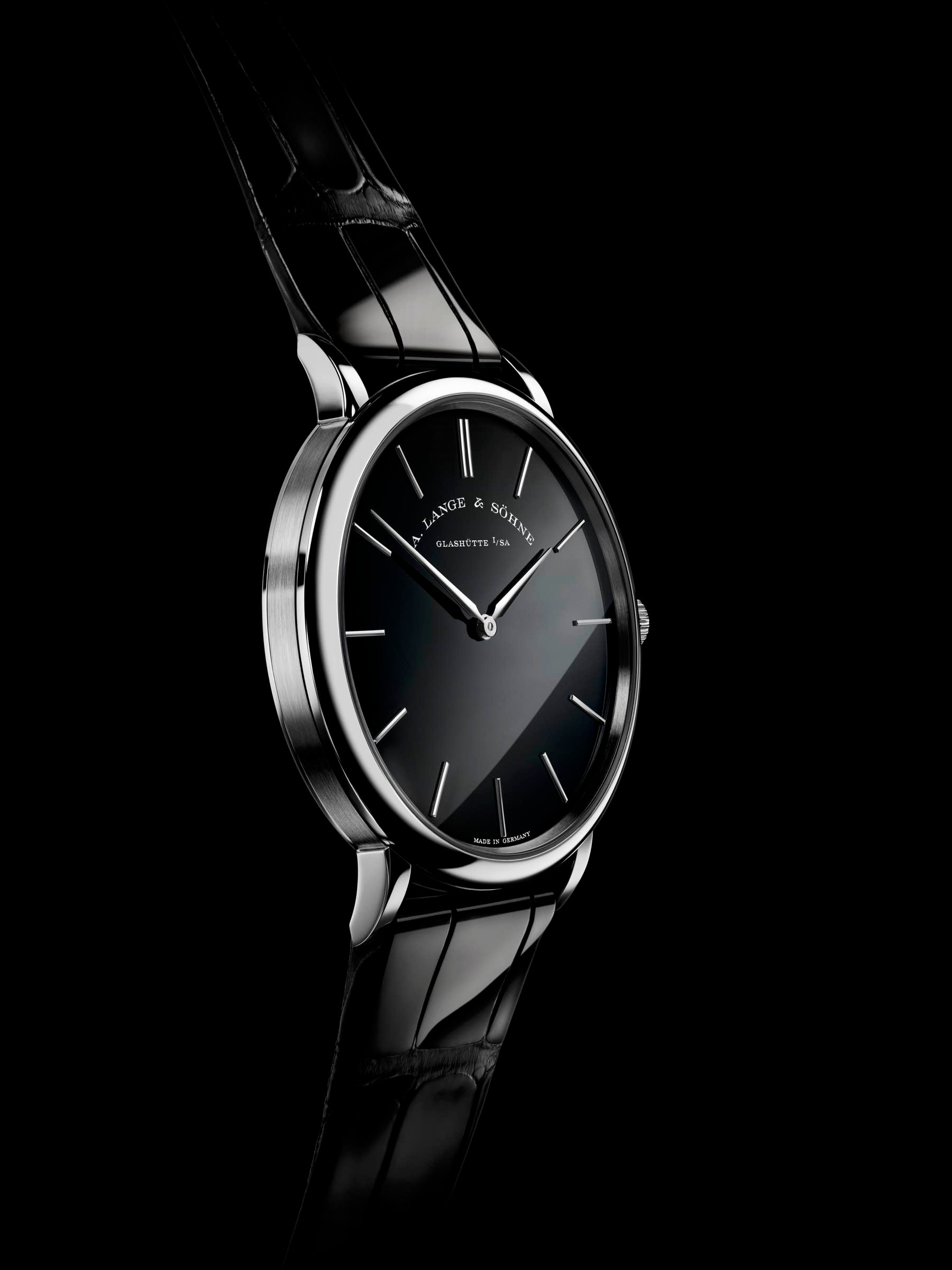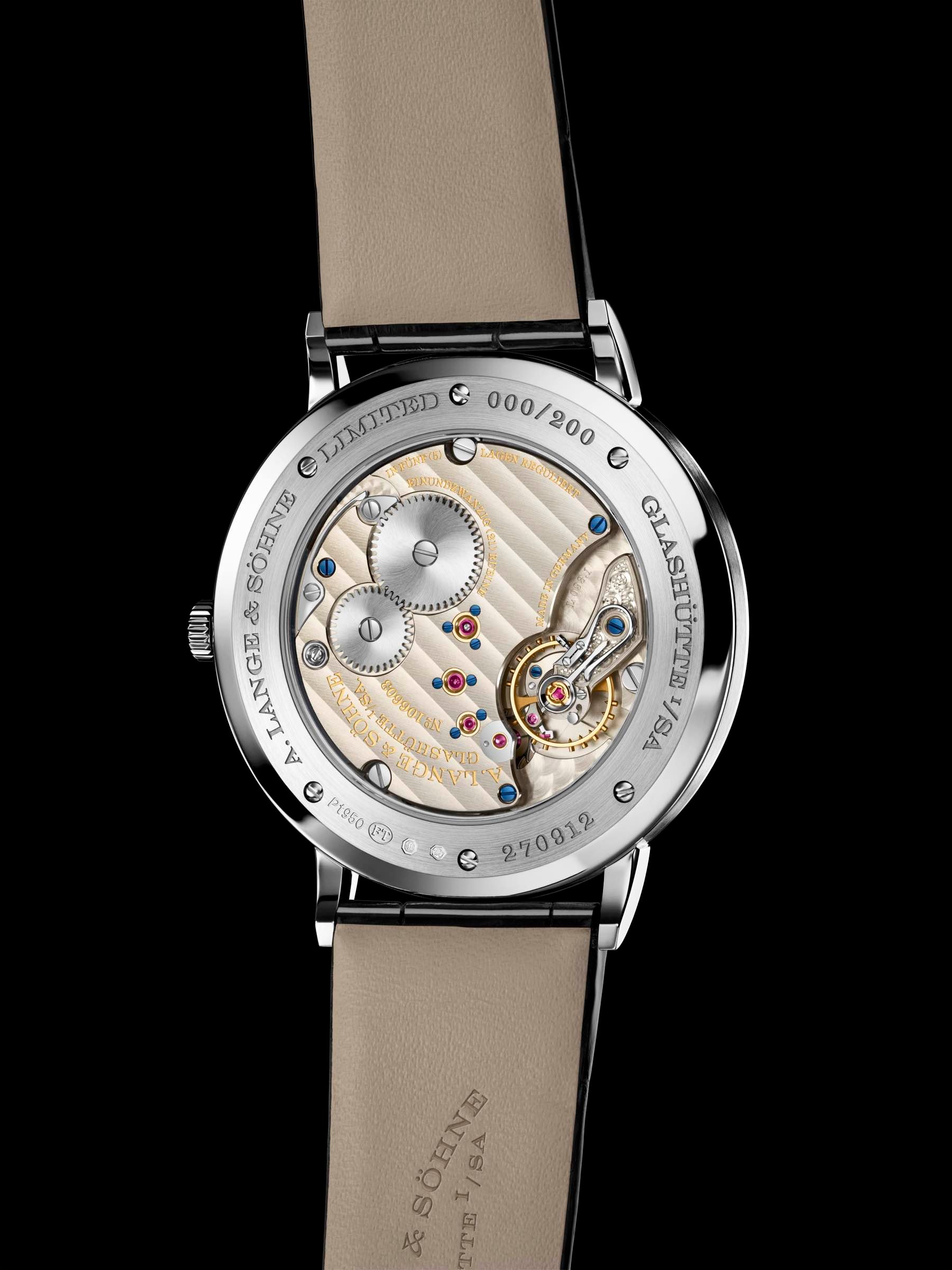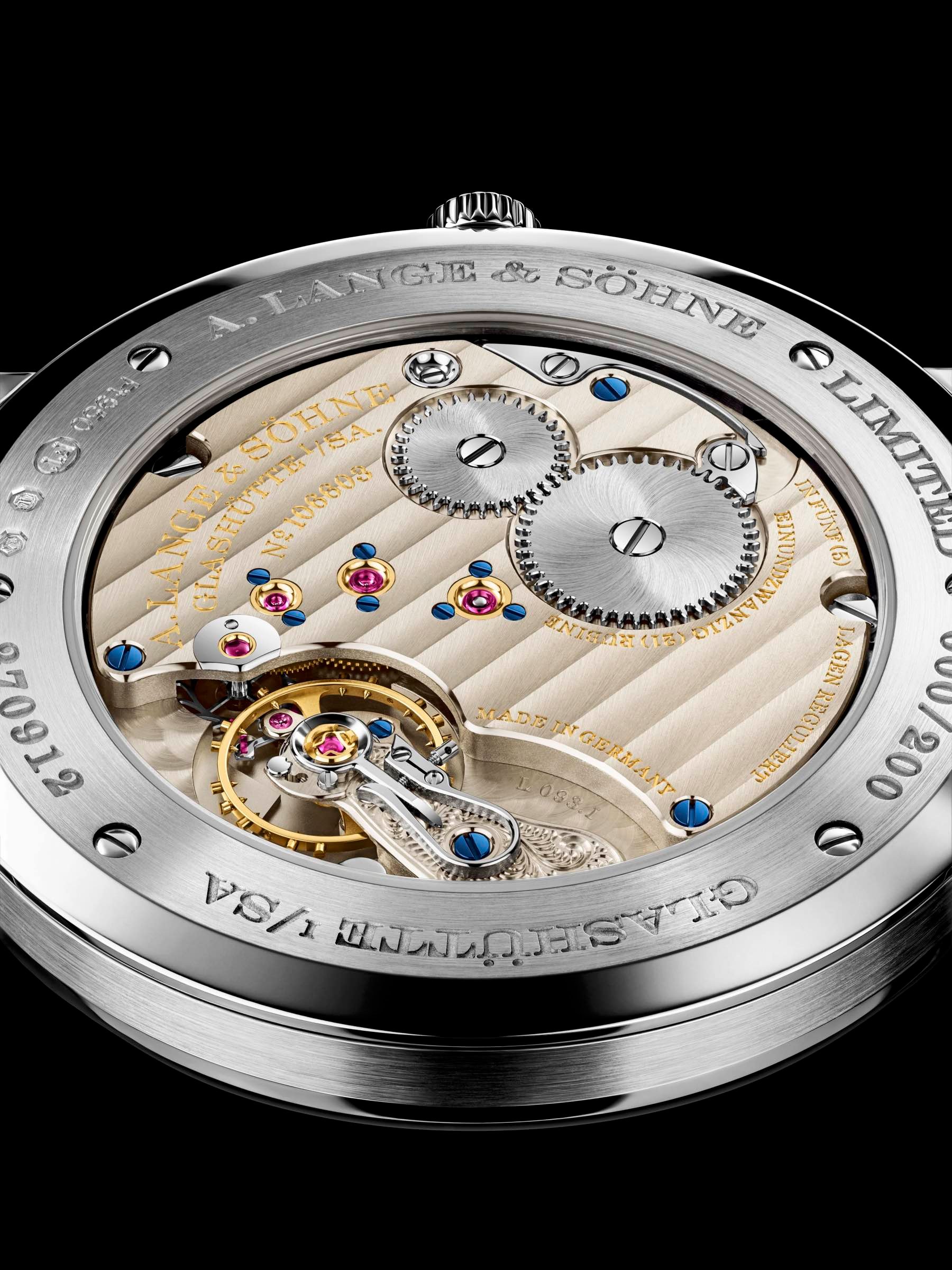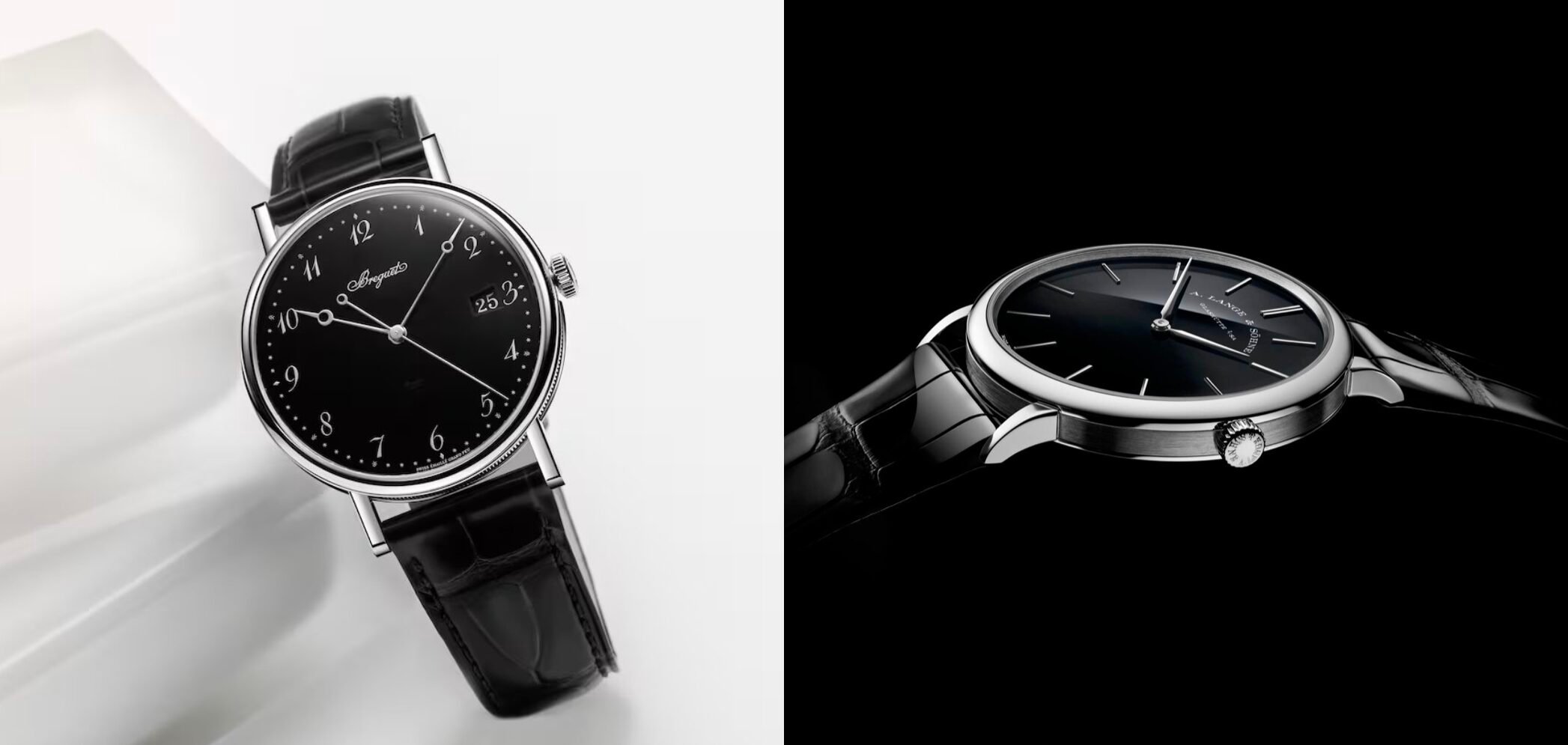Sunday Morning Showdown: Breguet Classique 5177 Vs. A. Lange & Söhne Saxonia Thin Onyx
It’s Sunday morning again, so it’s time to grab a cup of coffee and enjoy another one of our showdowns. Last week, we put two dressier moonphase watches from Longines and Tudor up against each other. This week, we’re staying on the dressier end of the watch-design spectrum. However, we’ll do so with two more valuable pieces made of platinum. Recently, A. Lange & Söhne released its minimalist Saxonia Thin in platinum with an onyx dial. That watch reminded us of last year’s Breguet 5177, which is also platinum but with a black enamel dial. Let’s see which heavy-metal dress watch will win the showdown today!
Thomas is a big fan of all things Lange, so he’ll defend the Saxonia Thin Onyx. Daan still thoroughly enjoys his Breguet Classique 5907, so he’ll take the honors of defending the 5177, with its black enamel dial. But first, let’s take a look at what happened during last week’s installment.
Previously, on Sunday Morning Showdown…
As mentioned, we fought in a more accessible price range last week. But, actually, it wasn’t much of a fight. We thought Tudor’s newly introduced 1926 Luna could stand a chance versus the Longines Flagship Heritage Moonphase. However, the latter won by a complete knockout, earning a whopping 81% of the votes. Yes, the 1926 Luna is more than €600 cheaper and comes with a good bracelet. Still, its less outspoken and more mundane design, in combination with the date window at 3 o’clock, lost out to the Flagship Heritage Moonphase’s classic vintage-inspired looks. All right, it’s time to start this week’s battle.
Daan: Breguet Classique 5177
Indeed, I might be slightly biased here because I already own a watch from Breguet. But if I had to choose between these two dressy heavy hitters, I honestly think I’d go for the Breguet. Hear me out. To me, the Breguet Classique is the archetypal watch. It has a round case, straight welded lugs holding the strap, and Breguet’s signature coin-edge decoration for added recognition value. This design concept has been copied and imitated by many, but nobody does it like Breguet does.
The Classique 5177 is one of the few Breguet watches with a platinum case. I love this material because it goes completely unnoticed. It’s very much an “if you know, you know” material, similar to the white gold on my reference 5907. Both A. Lange & Söhne and Breguet did a great job by combining this mysterious heavy metal with a deep black glossy dial. However, even though they look quite similar initially, there’s a big difference between these dials.
The Grand Feu enamel dial is all about craftsmanship
The latest Saxonia Thin features a dial made of onyx. This means there’s a wafer-thin slice of gemstone, which carries the elongated appliques and minimalist printing. Sure, this dial requires skill to make it shine the way it does and patience to ensure it doesn’t break in the process. However, I’m almost certain the failure rate on Breguet’s black Grand Feu enamel dials is much higher, simply because it’s a more labor-intensive process. It requires more steps to complete, which also means you have more opportunities to mess it up.
Balazs described the labor-intensive process when he introduced the Breguet Classique 5177 with the blue Grand Feu enamel dial:
“Grand Feu is an enamel technique in which the artisan applies a thin layer of enamel powder to a base disc (mostly copper). The disc needs to be cleaned in the acidic bath beforehand. The dial then goes back in the oven, which is over 800° Celsius. When the powder melts, the dial is taken out and flattened, and a new layer of powder is applied. Then, it goes back into the oven. With each layer, the enamel gets a different shade until it reaches the final color. It’s a very meticulous process.”
This meticulous process is why every enamel dial has its imperfections and is slightly different from the next one. But that’s also exactly what adds character to a timepiece like the Classique 5177. These dials are truly something to behold, admire, and enjoy — just like the hand-guilloché dial in my 5907.
More graceful and automatic
Apart from the dial, I also prefer the Breguet Classique’s more graceful design and its proportions. Sure, the Saxonia Thin looks very clean, especially without a central seconds hand and date window. However, the dial almost looks a bit too clean and clinical to me — there’s very little to love. I also feel the lugs and crown are a bit too petite. Maybe that’s just because the 40mm case is just a tad too large. I’d rather have this 38mm Breguet.
All right, the cut-out at 3 o’clock on the 5177’s dial isn’t the best date window in the industry. But at least it also has a black backdrop and silver numbers, like the rest of the dial. I also prefer the graceful Breguet numerals over the elongated and quite boring indexes on the Lange. In addition, the Classique 5177’s minute track must be one of the most beautiful ones ever, while the Saxonia Thin doesn’t even have one.
Finally, I also very much appreciate the convenient, self-winding movement inside the Breguet Classique 5177. While it’s not made of German silver and lacks a hand-engraved balance cock, it does do all the winding for you with its 18K gold hand-guilloché rotor. All right, that’s it from my side. Over to you, Thomas. Let’s hear your arguments for the A. Lange & Söhne Saxonia Thin Onyx.
Thomas: A. Lange & Söhne Saxonia Thin Onyx
Good morning, Daan! You make a compelling case for a very attractive watch. Anyone would be lucky to wear either of our contestants today. We should mention pricing, which is eerily similar for these two. The Breguet comes in at €43,500, while the Lange is “price on request” but estimated to sit around €45,000. I would argue the difference is negligible at this point.
Still, I think the Saxonia Thin Onyx is the one to get. I say so based on three main arguments — conceptual congruence, horological prowess, and the onyx dial. Yes, indeed, I think the onyx dial is even better than your enamel dial. I will kick off with that last point.
Lange’s onyx dial over Breguet’s enamel
Let me start with a disclaimer: I love enamel dials. In fact, I love them so much, I learned how to make them myself. Believe it or not, until a few years ago, I had one of those kilns in my attic and regularly made enameled jewelry. This leads me to a probably controversial statement: enamel watch dials are overrated. Or, at least the craft involved is a bit overstated. While it is indeed a finicky and sensitive process, I don’t think it should be mentioned in the same breath as true métiers d’art and, for instance, guilloché work or cloissonné enamel. Anyone can learn it in a reasonable amount of time, and it certainly isn’t magic. The result can be, but the craft isn’t as elevated as we make it out to be.
On to the Saxonia Thin Onyx. My argument is that enamel versus onyx is about a fairly straightforward human craft versus a very advanced natural counterpart. Onyx forms as silica-rich water seeps through a porous host rock. Over tens of thousands to even millions of years, thin layers of alternating white and black chalcedony stack up. The result then needs to, by chance, get elevated to the surface by geographical events. As a philosophical exercise, then, I would argue that onyx is the more interesting of the two materials.
Add to this that it isn’t a matter of slicing a rock and throwing it into a platinum case. The wafer-thin stone is fitted to a polished silver base plate, resulting in a deep and dynamic black dial. Plenty of craft is involved, not just from our German watchmaking friends but also from Mother Nature herself.
The Saxonia Thin Onyx is a better dress watch
On to my second point, which is one I make often in Sunday Morning Showdowns. I feel one of the most important factors in evaluating a watch is its conceptual congruence. Does every design choice point in the same general direction? After handling many thousands of watches, I find this question is the best predictor of how enjoyable my experience with a watch will be.
The Breguet has one thing going for it over the Lange — its diameter. I agree, Daan, that the 40mm Saxonia Thin is a bit too big. I would have strongly preferred to see the onyx dial in the 37mm version of the same watch.
That said, the Breguet gets a couple of bad marks elsewhere. You mention the automatic movement as a plus, but I would argue against it. A classical dress watch, in my eyes, should be manually wound, not just for the tactile pleasure of winding it but also for the clearer view of the high horology residing inside. And a date complication? That’s a no-go for me on watches like this, especially when they are as intrusive as on your Breguet.
The A. Lange & Söhne from a horological perspective
Finally, I would say that the A. Lange & Söhne Saxonia Thin Onyx is the more desirable watch from a horological perspective. Its German silver movement with a three-quarter plate and hand-engraved balance cock looks more distinct and, arguably, prettier.
The Breguet introduces some modern stuff, like a free-sprung balance with a silicon hairspring. While that may be a USP in a sports watch, I prefer Lange’s classical solution with its eccentric fine adjustment. It all just looks and feels a little more appropriate, again tying in to my previous argument.
Both watches feature top-class finishing. However, I feel the Saxonia Thin Onyx showcases it a bit better. The lack of a rotor and the more daring overall aesthetic of the caliber put it in a class above the Breguet for me.
Time to vote!
Okay, with all of that out of the way, it is time to cast your vote! Which would be your pick? Let us know and share your motivations in the comments section below!

